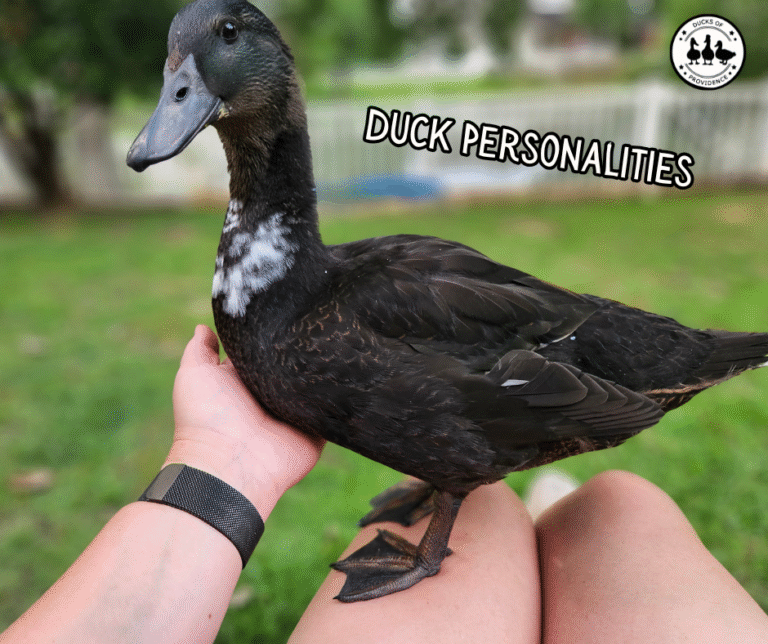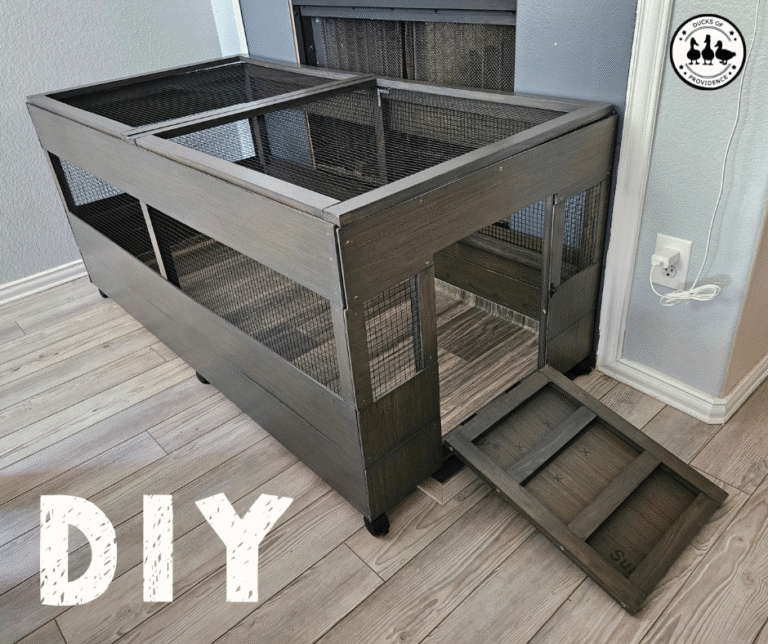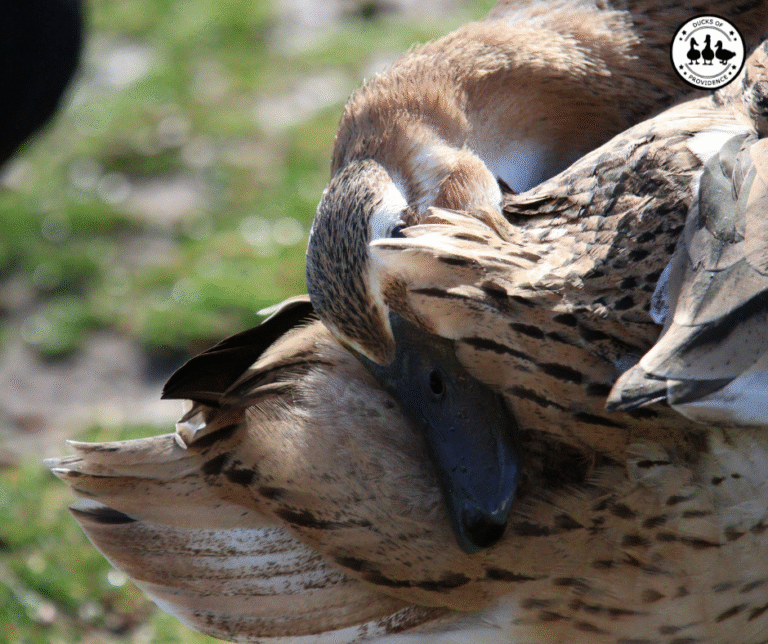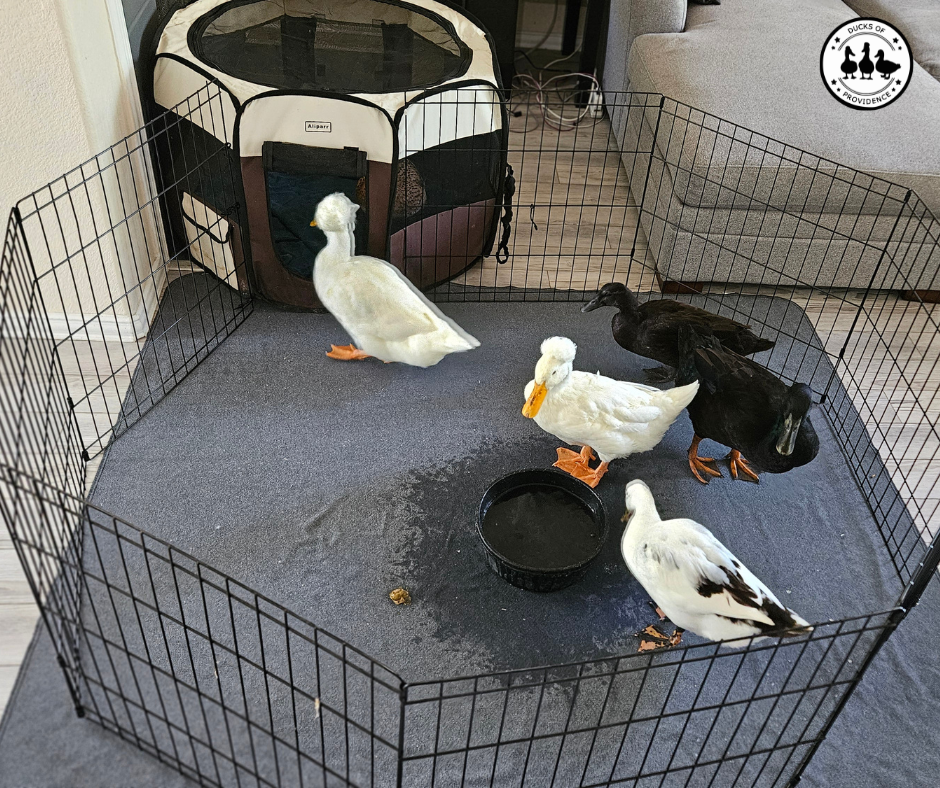
Indoor Pet Ducks: Tips for a Happy, Healthy House Duck
Keeping a duck indoors may sound unusual to some, but for many devoted duck lovers, it’s a rewarding and deeply personal choice. Ducks can form strong bonds with their humans, show affection, and even follow you from room to room. But unlike dogs or cats, ducks have very specific needs, and keeping them healthy and happy inside your home takes thoughtful preparation, daily commitment, and a willingness to adapt.
In this guide, we’ll share what we’ve learned from our experience with our own flock, along with community-backed tips to help you create a safe, enriching indoor environment for your feathered friend. From managing the mess to meeting their social and emotional needs, we’ll cover everything you need to know to make indoor duck life a success for both of you.
Ducks of Providence is free, thanks to reader support! Ads and affiliate links help us cover costs—if you shop through our links, we may earn a small commission at no extra cost to you. Thanks for helping keep our content free and our ducks happy! 🦆 Learn more
Is an Indoor Duck Right for You?
Before you fall in love with the idea of a waddling companion at your feet, it’s important to understand what life with an indoor duck really involves. Ducks are charming, affectionate, and surprisingly full of personality—but they also come with unique needs that don’t always align with indoor living.
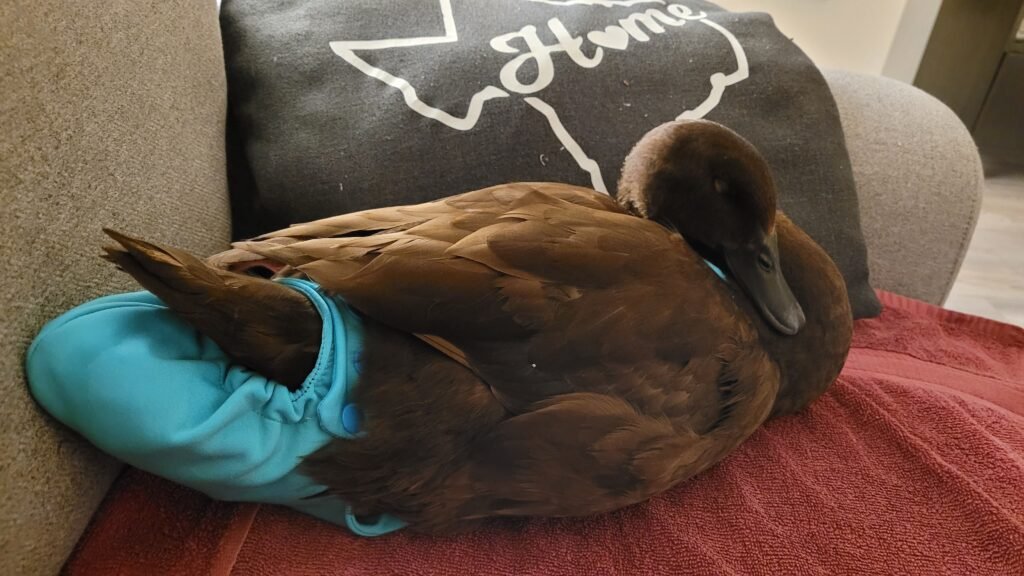
We know this firsthand. Our sweet Krümel has been part of our indoor routine for nearly three years. While she still spends time outside during the day, she comes in every evening and sleeps indoors at night. She’s part of the family—cuddling on the couch, exploring the kitchen floor, and napping in her favorite spot. More recently, Muffin has joined her for indoor time, and watching them settle into their indoor habits together has been a joy.
But keeping ducks indoors isn’t just about snuggles and cute moments. It requires thoughtful setup, daily cleaning, social interaction, and an understanding of duck behavior. Ducks can’t be house-trained like dogs, and they’re flock animals who crave companionship and routine. That said, with the right care and structure, it is absolutely possible to share your home with a duck—and we’re here to help you do it right.
In the sections ahead, we’ll share what we’ve learned through experience and research to help you create a safe, enriching, and manageable indoor life for your duck.
Creating a Duck-Safe Indoor Space
If you’re bringing a duck indoors—even part-time like we do with Krümel and Muffin—it’s essential to set up a space that’s both safe for your duck and manageable for you. Ducks are curious and love to explore with their bills, which means they’ll get into just about anything if given the chance.
Here are a few tips to help you create a duck-friendly indoor environment:
1. Use Non-Slip, Easy-to-Clean Flooring
Duck feet aren’t made for slick surfaces, but ironically, the best flooring for keeping things clean is just that: hardwood, tile, or vinyl. These surfaces make it much easier to wipe up frequent messes and prevent lingering odors or staining. However, they can be hard on duck feet and slippery.
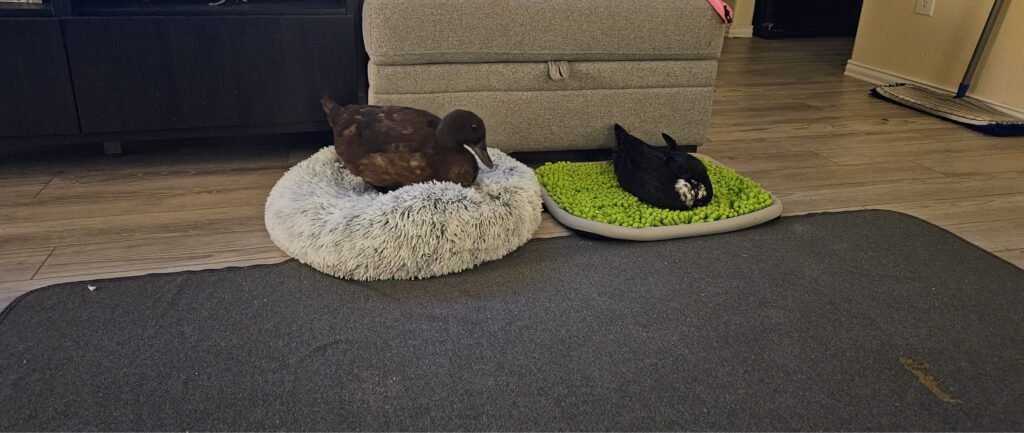
To keep your duck comfortable and safe, we recommend layering soft, non-slip coverings like foam play mats, washable pet blankets, or textured rugs. Even towels will do the job if you’re in a pinch. These give your duck a cushioned place to walk and rest while protecting your floors from moisture and scratches.
Bonus: it makes cleanup easier when accidents happen—which they will.
2. Duck-Proof Like You Would for a Toddler
Cover electrical cords, block off access to small or breakable objects, and make sure anything that could be chewed, swallowed, or tripped over is out of reach. Ducks will nibble on anything that piques their curiosity, including plastic, fabric, and wires.
3. Set Up a Designated Duck Zone
Even if your duck has the run of the house during the day, it’s incredibly helpful to have a specific area that’s just for them—a safe space where they can eat, relax, and sleep. This not only helps contain messes but gives your duck a consistent, familiar spot that they can return to when they need rest or comfort.
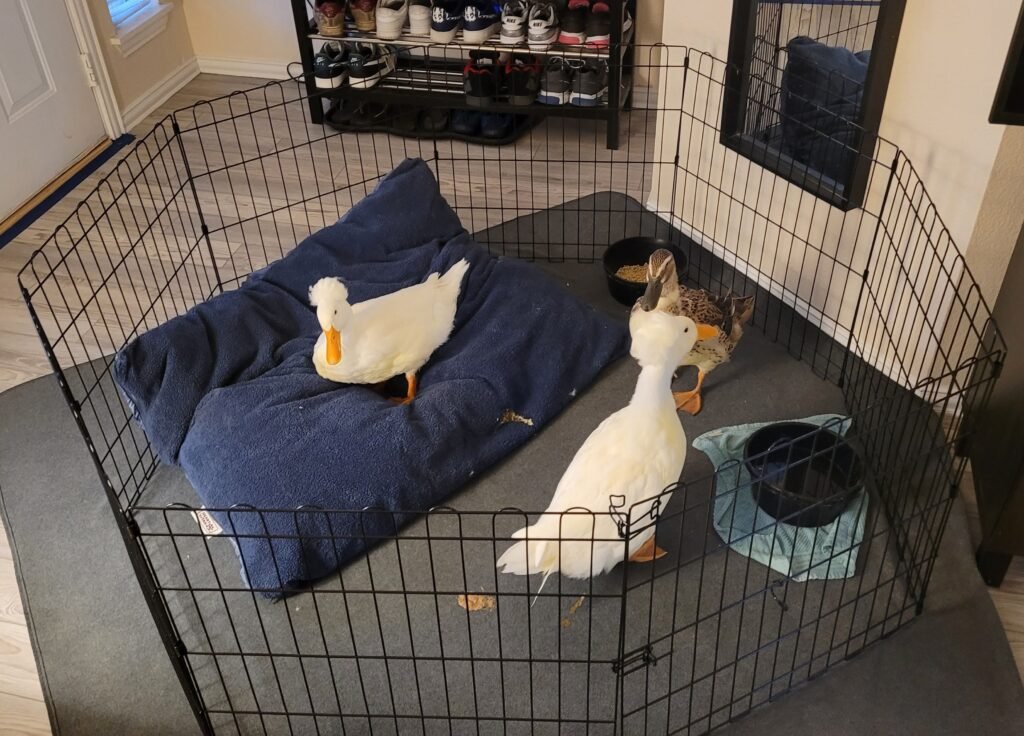
During the day, you can fence off part of a room using a foldable metal playpen and place an absorbent puppy blanket or washable mat underneath. This setup is especially helpful if you don’t want your duck roaming the entire house, and it makes cleanup much easier. It also creates boundaries for food and water stations so they stay in one area, rather than ending up across the floor.
At night, we use a large soft-sided puppy playpen, which has become Krümel’s cozy nook. Inside, we layer pine shavings as bedding, which helps control moisture and odor while giving her something soft and natural to settle into. We’ve also used towels when we’re caring for a duck indoors short-term—like when one of our girls is sick and needs close monitoring. Towels make it easier to check droppings for any changes, but they require a lot of laundry, which can be tough over time.
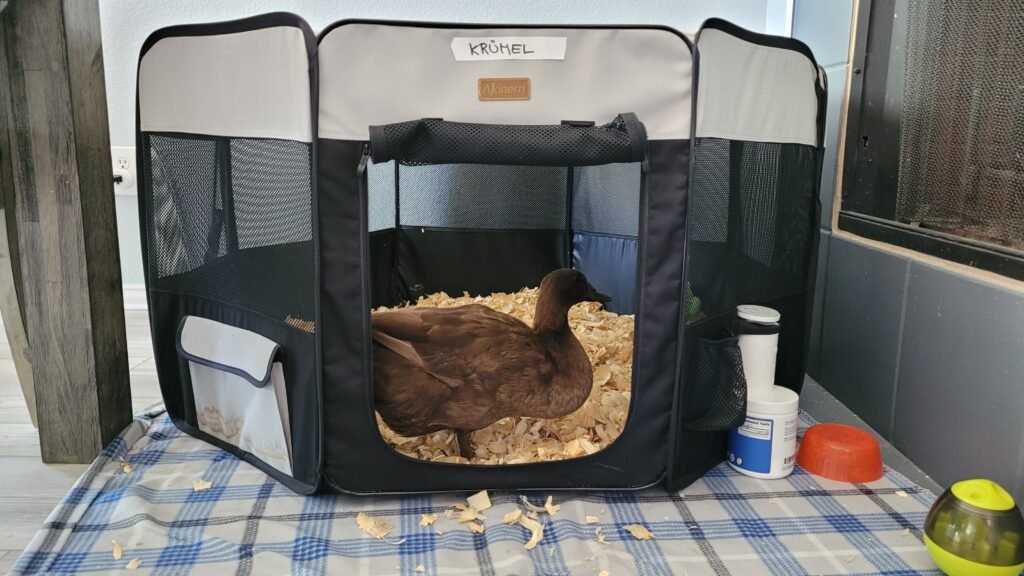
Some people prefer using disposable puppy pads, which are easy to change out daily. However, our ducks tend to rip them apart if left alone too long—especially Krümel, who clearly prefers real bedding over anything synthetic. Like so many things in duck care, finding the right sleeping setup is all about trial and error. Every duck has their own preferences, and what works well for one might not be ideal for another.
Other options for indoor sleeping areas include hard-sided dog kennels, large transport crates for big-breed dogs, or even pet furniture crates that blend into your home (though these tend to be a higher-priced option). If you enjoy DIY projects, you could also build a custom kennel using wood and hardware cloth to suit your space and your duck’s needs.
No matter what setup you choose, the goal is to create a comfortable, secure place where your duck feels safe—and where cleanup won’t drive you crazy.
4. Keep Plants and Cleaning Products Out of Reach
Many common houseplants are toxic to ducks (and other pets), so check your indoor greenery carefully. Likewise, avoid exposing ducks to strong chemical cleaners, candles, or essential oils. Ventilate well and opt for pet-safe cleaning products whenever possible.
5. Watch for Temperature and Drafts
Ducks are hardy, but indoors they can still be affected by heat or cold. Avoid placing their area near a vent, fireplace, or drafty door. Make sure there’s good airflow, especially if your duck wears a diaper or is confined to a smaller space.
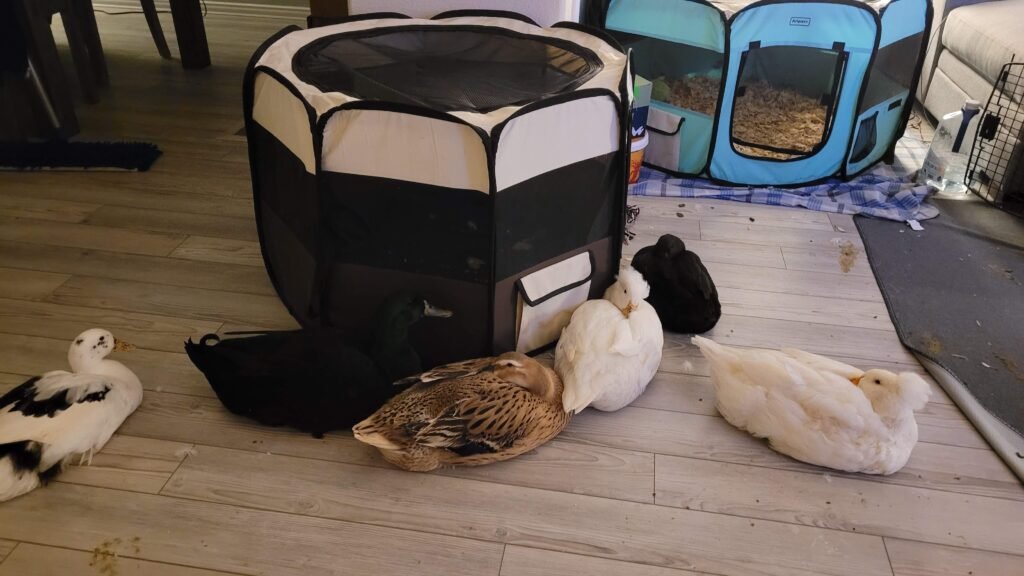
Managing the Mess: Duck Diapers and Clean-Up Tips
Let’s be honest—ducks are messy. They poop often and without warning, and unlike dogs or cats, they can’t be housetrained in the traditional sense. But with the right strategies, tools, and mindset, it’s absolutely possible to manage the mess and keep your indoor space clean and livable.
We’ve had Krümel indoors for nearly three years now, and Muffin recently joined her. We’ve tried it all—from no diapers and puppy pads to different harness styles—and we’re sharing what’s worked best for us.
Duck Diapers: What to Know
Duck diapers are specially designed harnesses that hold an absorbent liner to catch droppings. They come in a variety of styles and sizes, so it may take some trial and error to find one that fits your duck well and doesn’t cause rubbing or discomfort.
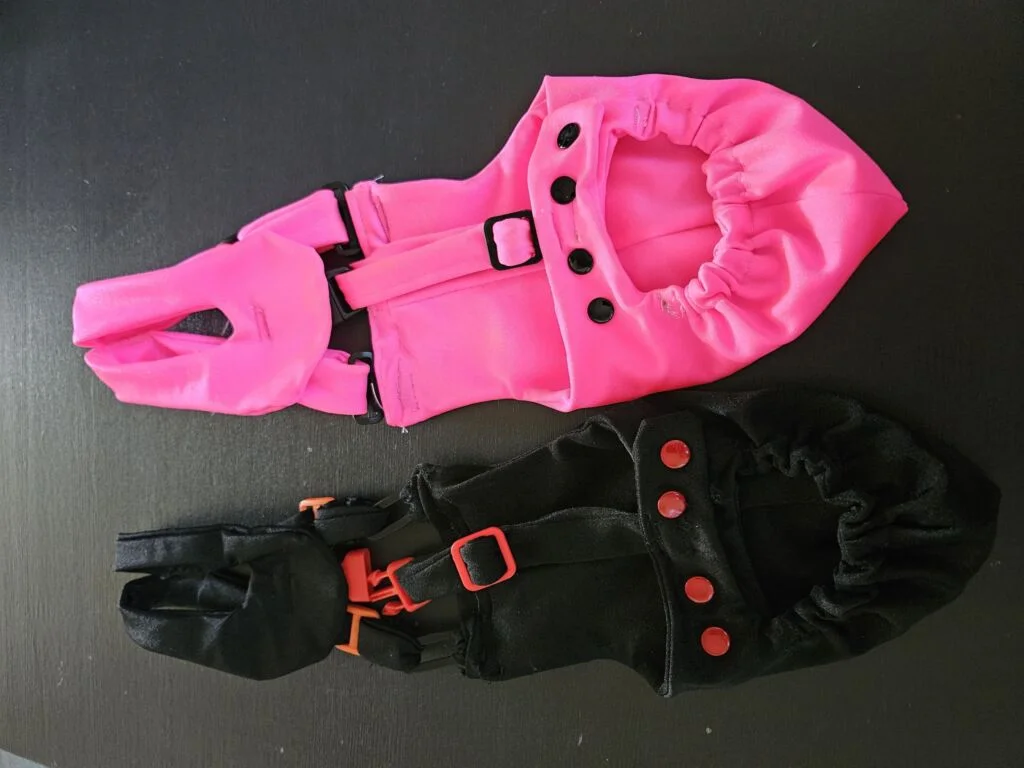
Early on, we ordered several diaper harnesses from Etsy sellers to see what would work best. While we appreciated the variety, none of them were quite perfect for our needs—so we began making our own. We took inspiration from one of our favorite designs and customized it for a better fit, softer straps, and easier liner changes. After refining the pattern, it quickly became our go-to.
Want to try making your own?
We’ve put together a full tutorial with step-by-step instructions and pictures.
👉 Check out our DIY Duck Diaper Harness Guide
A few quick tips:
- Choose a well-fitting harness. Look for adjustable straps and soft, breathable fabric. Some have waterproof linings to prevent leaks.
- Use unscented, chemical-free liners. We use baby diapers cut in half.
- Take diaper breaks. Diapers should never be worn 24/7. We remove them during supervised outdoor time or when the ducks are in their designated area for the night.
👉 Learn more about Duck Diapers and how to use them properly.
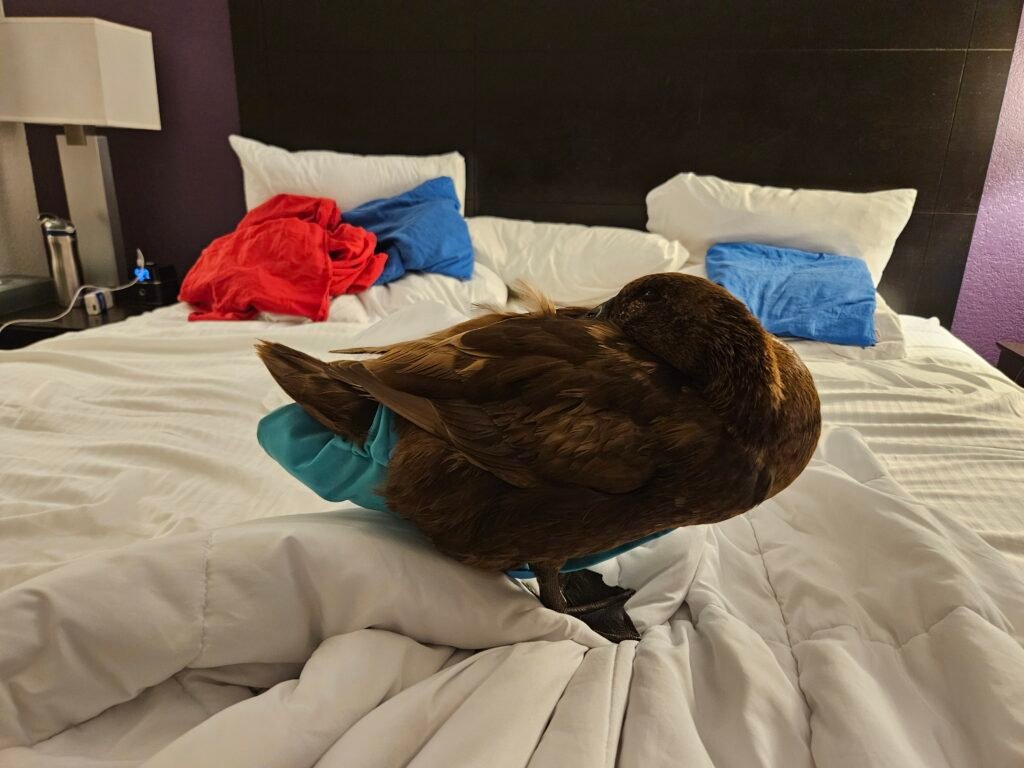
Cleaning Strategies That Work
Even with a diaper, you’ll be cleaning often—so make it easy on yourself.
- Keep cleaning supplies handy. We always have pet-safe wipes, a spray bottle with diluted white vinegar, and old towels nearby.
- Use washable layers. Whether it’s fleece blankets, washable puppy blankets, pet couch covers, towels, or foam mats, having multiple sets that you can swap out daily is a game-changer.
- Puppy pads for backup. We sometimes use disposable puppy pads under the duck’s sleeping area or under a favorite resting spot to catch any overflow or nighttime accidents.
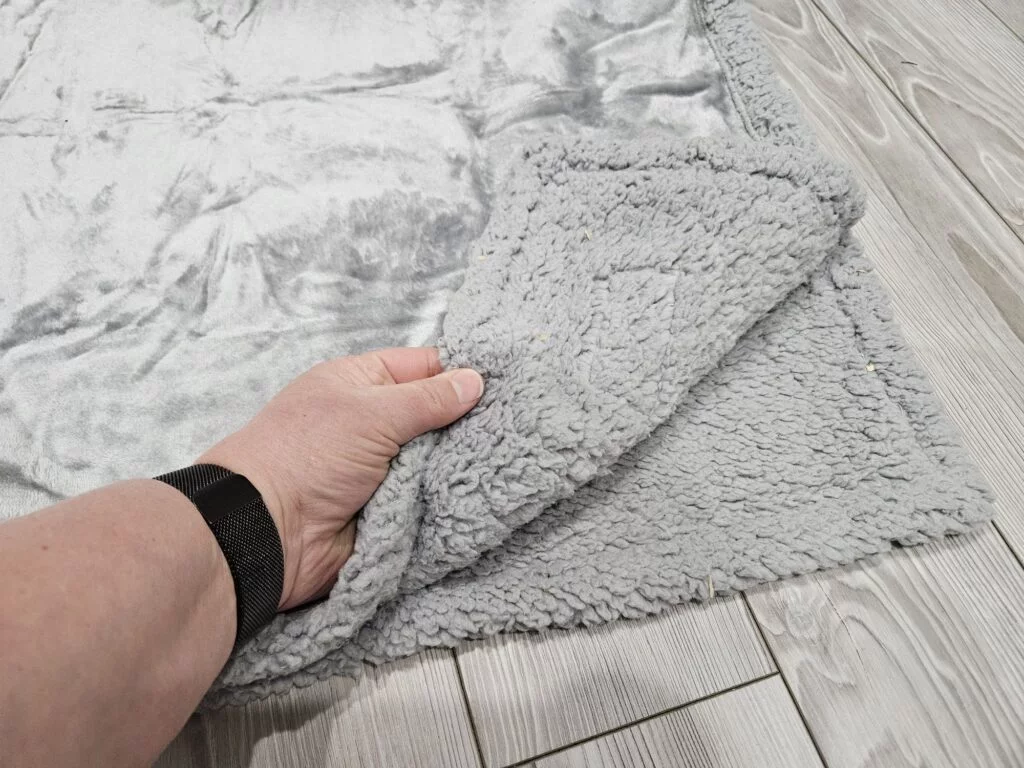
Dealing With Odor
A clean space shouldn’t smell. If you notice lingering odors, it may be time to adjust your cleaning routine.
- Wash diaper harnesses daily and discard used liners immediately.
- Clean floors and mats with vinegar or enzyme-based cleaners.
- Consider an air purifier if your duck spends a lot of time in one room.
We’ve found that with consistency and the right setup, the cleaning becomes just another part of the daily routine, much like any other pet.
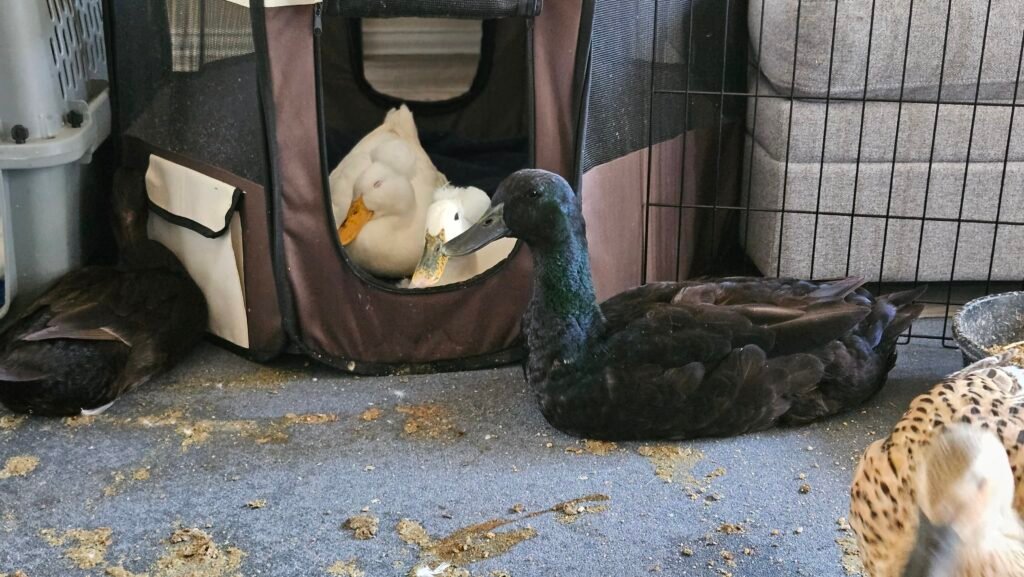
Feeding Ducks Indoors
Feeding a duck indoors comes with its own set of challenges, especially when it comes to keeping things clean. Ducks are messy eaters by nature. They love to scoop, splash, and filter their food through water, which means you’ll want to plan ahead to minimize spills and avoid soggy floors.
We’ve learned through trial and error with Krümel and Muffin how to create feeding setups that are both duck-friendly and human-manageable.
Where and How to Feed
Always provide food near or in water. Ducks need water to properly swallow and digest their food. If they eat dry pellets or grains without water nearby, it can lead to choking or crop impaction.
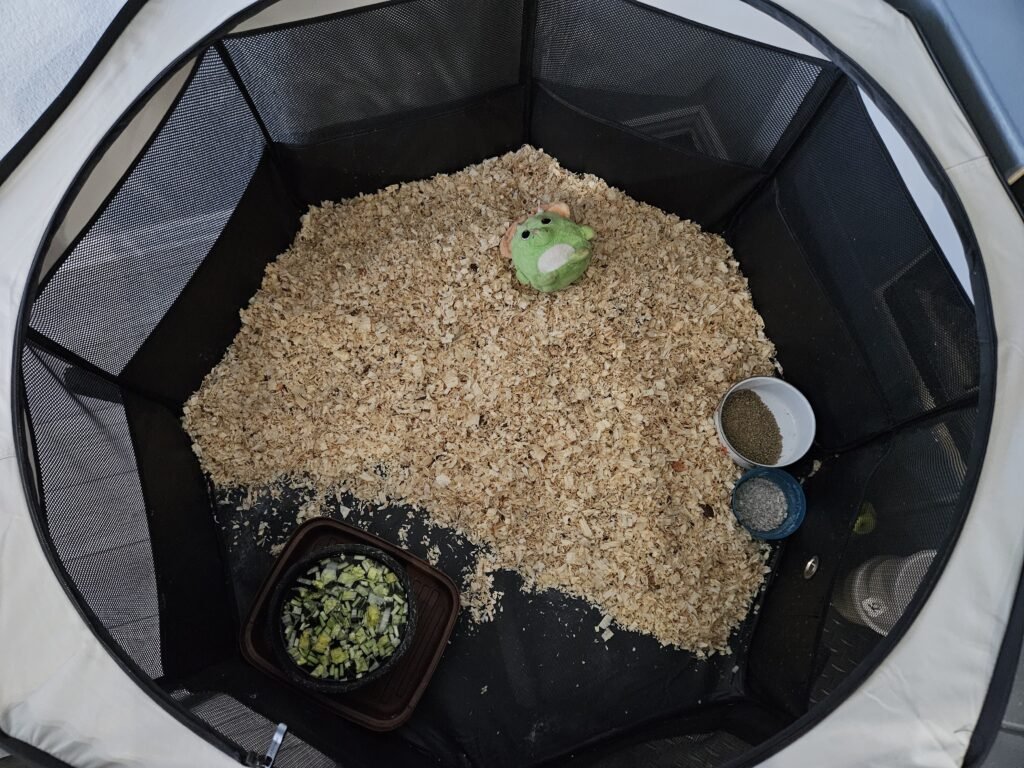
Here’s what works best for us indoors:
- Bowl-in-container setup: In the ducks’ sleeping area—an extra-large, soft-sided playpen—we place their water bowl inside a secondary plastic container. This simple trick has helped enormously in containing splashes and keeping the rest of the sleeping area dry.
- On-the-go setup: When Krümel and Muffin are roaming the house, we put their water bowl on top of a thick, absorbent, but washable pet blanket. It catches the spills and can be tossed in the washer at the end of the day.
- Use a feeding station: Whether it’s a boot tray, rubber mat, or underbed storage bin, having a designated area that’s easy to clean makes daily life smoother. Be sure to wipe it down and refresh the water regularly.
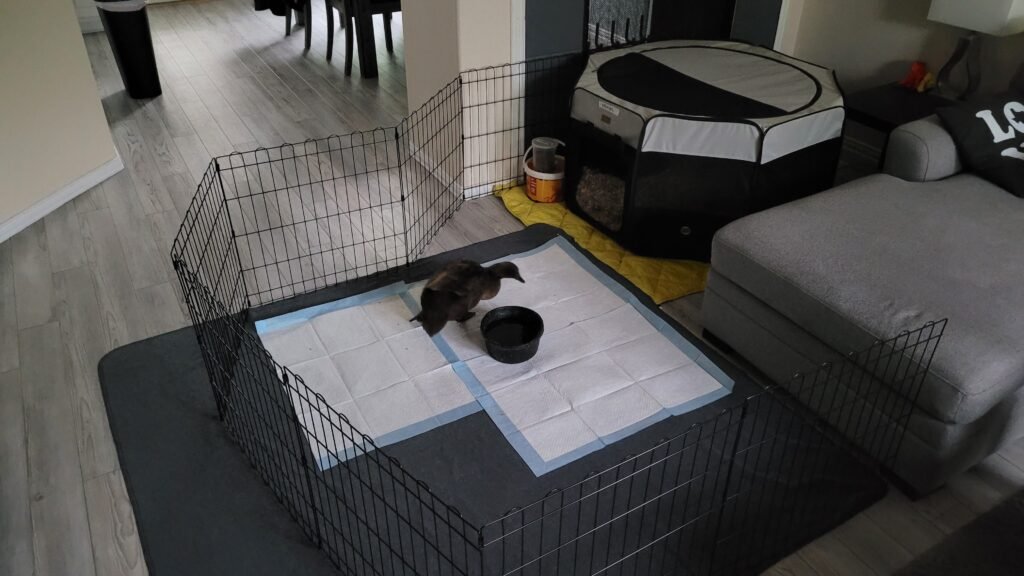
What to Feed
Indoor ducks should be fed a balanced, high-quality waterfowl maintenance feed, appropriate for their age and egg-laying status. We rotate between and mix Grubbly Farms, Mazuri, and Purina—all of which our flock has tried over the years. Not every duck will love every brand, so be prepared for preferences!
- Layer ducks need additional calcium, especially if they’re laying indoors with less natural foraging.
- Offer regular greens or veggies: Ducks love chopped lettuce, peas, cucumber, or zucchini. Just be sure to clean up leftovers so nothing spoils indoors.
- Avoid high-protein treats: Indoors and with limited exercise, it’s easy for ducks to put on weight. Stick to healthy, low-calorie snacks in moderation.
👉 Learn more about the nutritional needs of ducks and what commercial feed might be the best for your duck(s).
Keep It Clean
Indoor feeding areas should be cleaned daily to avoid pests and odors.
- Dump and rinse water bowls at least once or twice a day.
- Wipe down trays or mats under the feeding station.
- Store feed in sealed containers to prevent rodent or insect problems.
Feeding indoors is definitely doable, and with a few simple setups, it becomes part of the routine. Your duck—and your floors—will thank you!
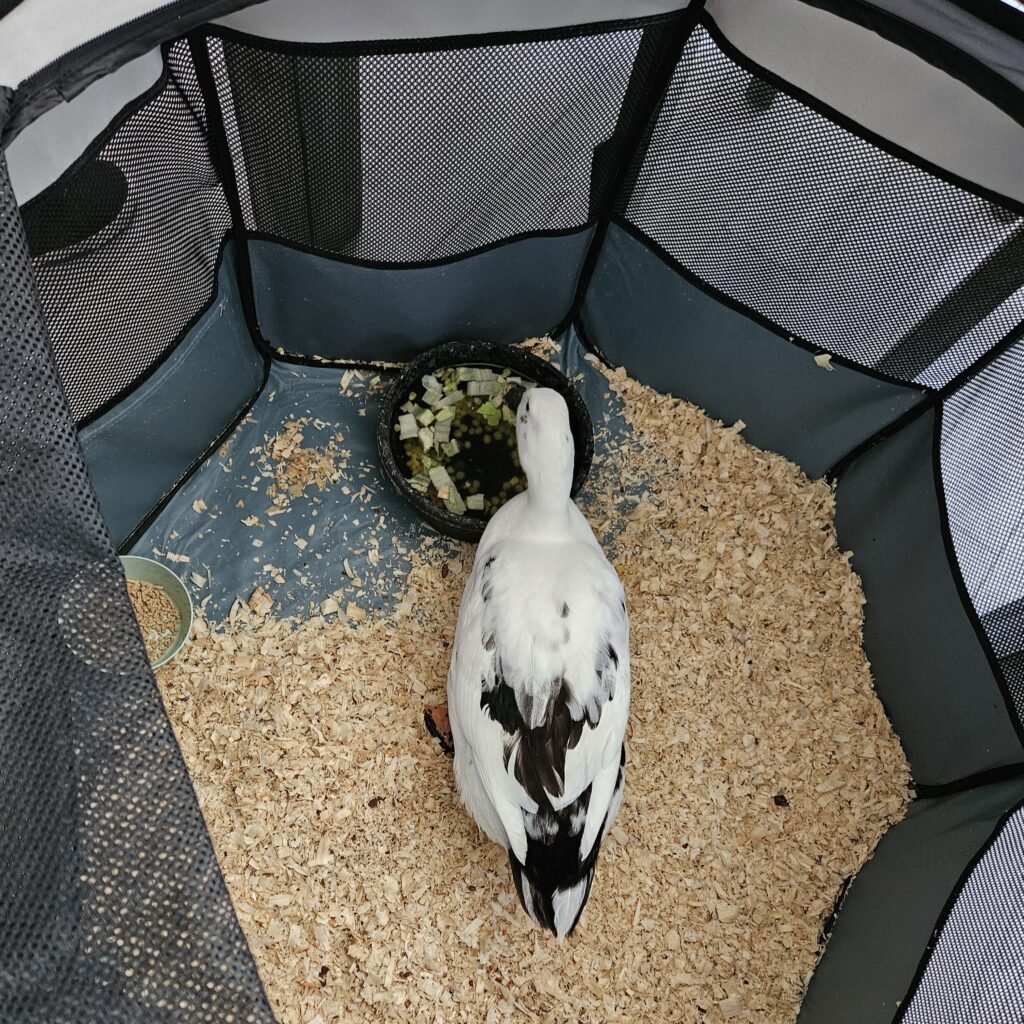
Social and Emotional Needs of Indoor Ducks
One of the most beautiful things about living with a duck is the bond you can build. Ducks are not only intelligent—they’re also incredibly social, emotional animals that form strong attachments to their flockmates, including their humans. But when kept indoors, especially without other ducks around, it becomes even more important to meet their emotional needs.
Krümel and Muffin both thrive with regular human interaction, daily routines, and, most importantly, companionship. Ducks don’t do well in isolation.
Ducks Need a Flock—Even Indoors
Ducks are wired to live in flocks. They rely on social cues, vocal communication, and shared routines. If you’re keeping a duck indoors full-time, we strongly recommend having at least two ducks. A single duck without a companion is at high risk of stress, boredom, and behavioral problems—even if you’re home often.
If you’re only able to have one duck indoors, make sure they still get interaction with other ducks during the day, or dedicate plenty of time for bonding activities (cuddling, hand-feeding, talking, or just sitting together).
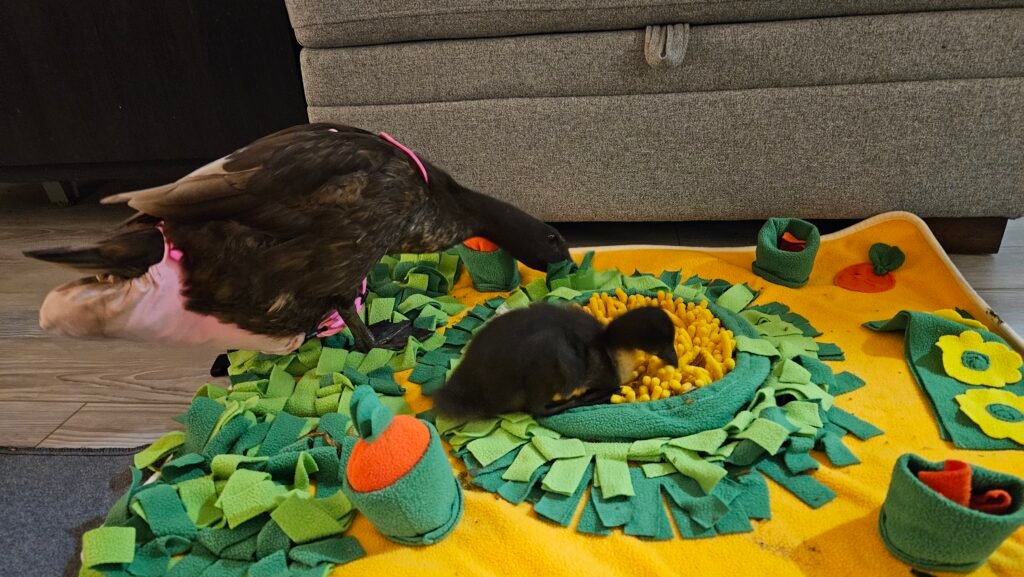
Provide Mental Stimulation
Ducks are naturally curious and need mental stimulation to stay happy, especially indoors where they can’t forage, dig, or explore as they would outside. With Krümel and Muffin, we rotate different toys and activities throughout the week to keep things interesting.
Here are a few ideas we use:
- Foraging games: Scatter peas or chopped lettuce in a shallow pan of water for them to “hunt.”
- Toys: Soft dog toys, toddler stacking cups, or even crumpled paper balls can be fun to explore.
- Mirrors or shiny surfaces: Especially helpful for solo ducks—they love the “friend” in the mirror.
- Routine: Ducks thrive on predictability. Feeding at the same time, quiet evening routines, and consistent lights-out time all help your duck feel secure indoors.
We’ve put together a full list of our favorite duck-friendly enrichment ideas—check it out here:
👉 Fun Enrichment Activities for Pet Ducks
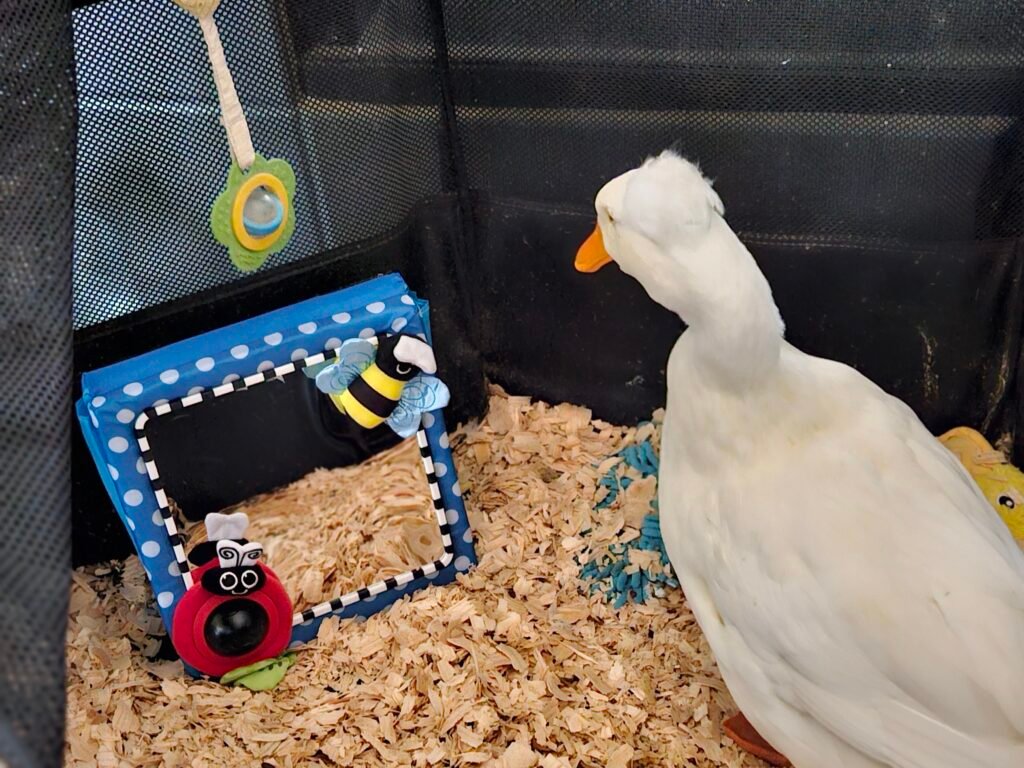
Ducks Are Emotionally Complex
Ducks feel more than many people realize. They can express joy, fear, jealousy, boredom, and grief. Indoor ducks—who are more closely involved with daily human life—may show these emotions even more clearly.
Spend time observing your duck. Do they follow you around the house? Do they get agitated when left alone too long? Do they vocalize when they see you? These are signs of connection and also reminders of the emotional investment you’re making when you bring a duck into your home.
Outdoor Access Is Still Essential
Even if your duck spends their nights indoors or roams around your living room, regular outdoor access is absolutely necessary for their health and happiness. Ducks are active, social animals that need fresh air, sunlight, and space to move naturally. While an indoor setup can meet their basic needs, it can’t replace the physical and mental benefits of time spent outdoors.
In our flock, Krümel and Muffin spend most of the day outside with the rest of the ducks in our secure, predator-proof run. It’s their time to dabble in the mud, forage for bugs, stretch their wings, and socialize. They also enjoy supervised time in the backyard with the full group every day—whether it’s splashing in a pool, digging in the garden beds, or just lounging in the sun together. It’s a joy to see them so engaged and content, and we firmly believe this routine keeps them well-balanced despite being indoor ducks at night.
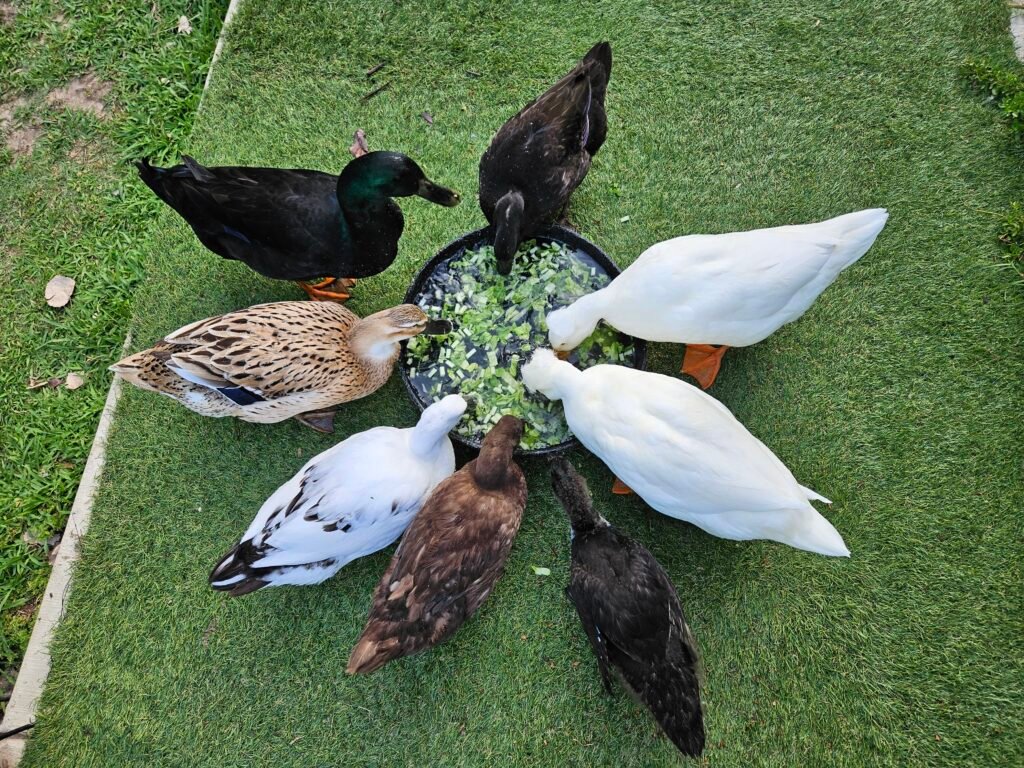
If you’re considering an indoor duck, it’s important to make outdoor time a regular part of their day. It helps maintain feather quality, encourages natural behaviors like preening and bathing, and supports overall health, especially bone strength and muscle tone. Ducks also rely on natural sunlight for vitamin D synthesis and to regulate their circadian rhythm. Indoor lighting can’t fully replicate the sun.
Even just a few hours a day outside in a safe space can make a big difference. Whether it’s a backyard, a covered patio, or a mobile playpen in a grassy area, giving your duck access to nature is one of the most meaningful things you can do for their well-being. Just make sure the area is secure and always supervise them, especially if they’re not used to navigating the outdoors on their own.
Health Considerations for Indoor Ducks
Keeping a duck indoors can offer some health benefits—like protection from harsh weather, predators, and parasites—but it also introduces a new set of risks that duck parents need to be aware of. Indoor environments are very different from the natural settings ducks evolved for, and we’ve seen firsthand how important it is to monitor their health closely and adapt their care routine accordingly.
One of the most common issues in indoor ducks is a lack of exercise. Without enough space to walk, flap, or bathe regularly, ducks can become overweight or develop muscle weakness. That’s why outdoor time, access to water for bathing, and room to move are so important—even for part-time indoor ducks like Krümel and Muffin. We always make sure they get time in the yard and time in the pool to help support their overall mobility and feather condition.
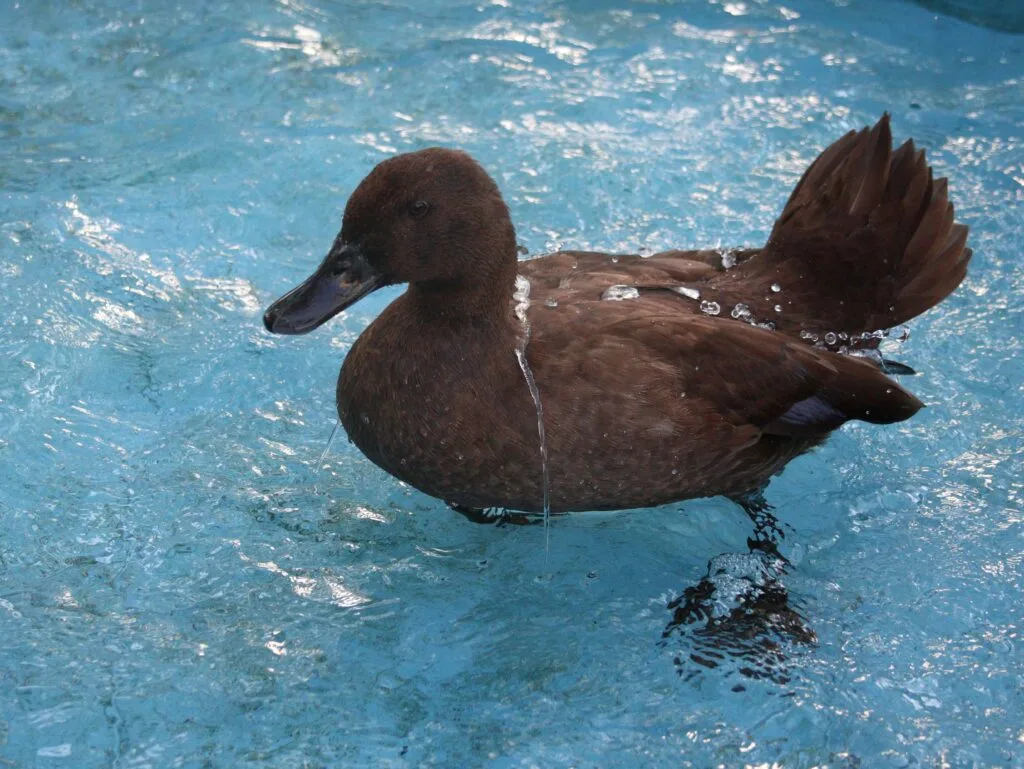
Another issue we’ve encountered is bumblefoot, a painful infection that can occur when ducks spend too much time on hard or slippery indoor surfaces. We try to prevent this by using soft, textured flooring inside, regularly checking their feet for early signs of pressure sores, and making sure they spend most of the day outside on natural ground.
Respiratory health is also something to watch. Dust, strong scents, candles, and cleaning chemicals can irritate a duck’s sensitive respiratory system. We use unscented, pet-safe cleaners and avoid air fresheners or anything with essential oils around our ducks. Good ventilation and regular cleaning go a long way in keeping the air fresh and safe.
Because indoor ducks are often more closely monitored than outdoor flocks, changes in behavior, droppings, or appetite are usually easier to spot. Keep an eye out for subtle signs of illness, and don’t hesitate to reach out to an avian or waterfowl-savvy vet if something seems off. Ducks are excellent at hiding discomfort, so trust your gut—if something seems different, it probably is.
And finally, keep in mind that ducks need access to water for proper preening. Even if your duck isn’t swimming indoors, regular supervised bath time in a tub or kiddie pool helps them clean and align their feathers, maintain waterproofing, and stay in good condition.
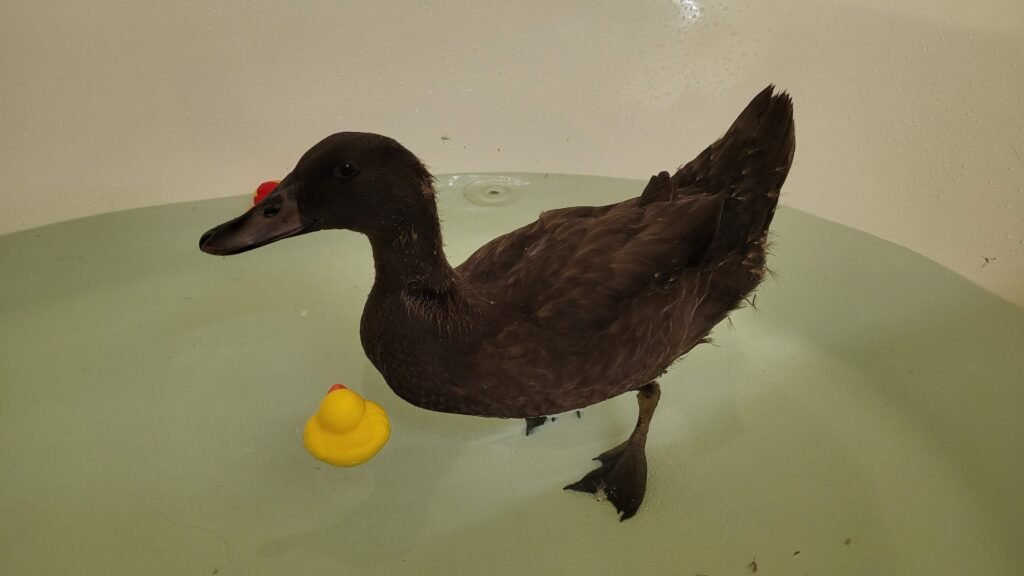
With the right balance of activity, hygiene, nutrition, and observation, indoor ducks can live long, happy lives. But they depend on us to notice the little things and create an environment that supports both their physical and emotional health.
Noise, Odor, and Sharing Space Indoors
One of the biggest surprises for new duck parents is just how present ducks are indoors. They’re not quiet little roommates. Ducks have their own language, ranging from soft grunts and excited squeaks to full-on quacks that can echo through the house. And depending on the breed and the individual, some ducks are much louder than others.
Krümel, for example, is fairly calm indoors and mostly chatters quietly—unless she’s excited about food or sees us come in with treats. Muffin, on the other hand, is much more vocal and loves to make her opinions known. We’ve learned to embrace their ducky conversations, but it’s something to consider if you live in an apartment or have sound-sensitive household members.
Then there’s the matter of odor. Ducks are clean animals by nature, but when you keep one inside, you’re responsible for managing everything that comes with them—diapers, spilled water, wet bedding, and scattered feed. If not cleaned regularly, these can start to smell. The key is staying ahead of the mess.
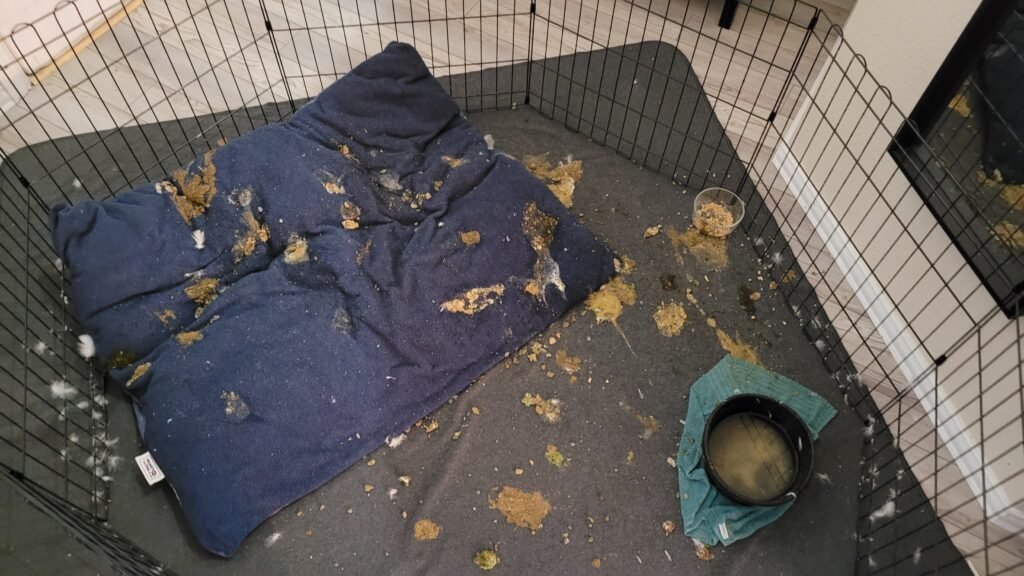
We’ve found that using absorbent but washable materials, changing out liners multiple times a day, and wiping down surfaces regularly makes a significant difference. We also do laundry regularly to keep the duck blankets, towels, and diaper harnesses fresh. We usually run a clean cycle on the washer afterwards for better hygiene, as we use the same washer for our clothes. When needed, a small HEPA air purifier helps with ventilation and odor control in their sleeping area.
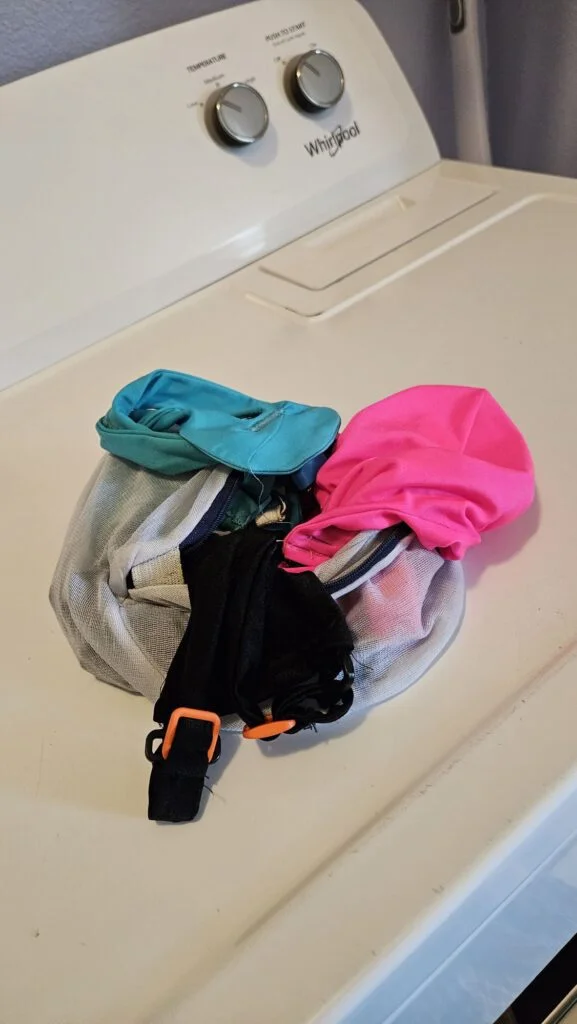
Sharing your space with a duck means making room not just physically, but emotionally and mentally, too. You’ll need to adjust your routines, rearrange furniture, and stay flexible when things don’t go as planned. Ducks don’t understand the concept of “no mess” zones—and you’ll probably find a feather or a splash of water in places you never expected.
But if you can accept the quirks and build a system that works for your space and your flock, the reward is a closer bond than you may have imagined. Living with a duck isn’t always easy, but it’s incredibly special.
Ducks and Other Pets: Can They Coexist Indoors?
If you already have pets at home, introducing a duck into the mix requires careful planning and supervision. Ducks are prey animals by nature, and even the gentlest dog or curious cat can cause stress—or worse—if interactions aren’t handled with caution. While some households manage peaceful cohabitation, it’s not always a good fit, especially if your other pets have strong hunting instincts.
We don’t have other pets in our home, but our ducks regularly see the neighbor’s dog through the fence, and a curious bunny sometimes visits our yard. Even those brief interactions remind us how important it is to keep ducks feeling safe and secure.
If you’re considering keeping ducks and other animals under one roof, it’s essential to create boundaries, monitor behavior closely, and prioritize the duck’s safety at all times.
🐶 Read more here: Keeping Ducks with Other Pets—What You Need to Know
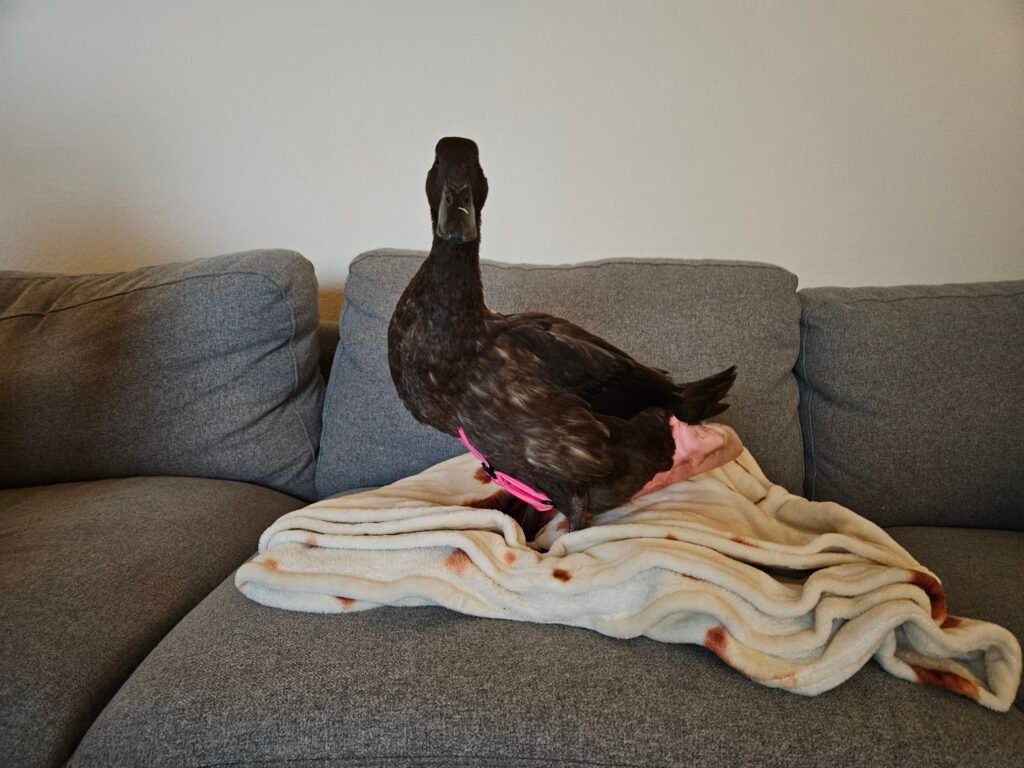
Ducks and Children: What to Keep in Mind
Ducks can be wonderful additions to a family with children, but they aren’t always the best match for every household. While they’re gentle and curious by nature, ducks don’t enjoy rough handling or sudden movements, and they can become stressed or defensive if they feel cornered or chased.
We always recommend teaching children to respect ducks as living animals with feelings and boundaries, not as toys. Supervised interactions, calm voices, and gentle touch go a long way in building trust on both sides. In our home, we’ve seen how patient and quiet moments with Krümel and Muffin create real connections—even if there’s no cuddling involved.
Ducks raised around respectful children may become very tame and sociable, but they should always have the option to walk away or retreat to their safe space. As with any pet, the responsibility of care ultimately falls on the adults.
Ducks can teach kids a lot about empathy, responsibility, and the rhythm of nature—but it’s up to us to guide those interactions with care.
Our Favorite Items for Indoor Ducks
After years of trial and error—and many late-night cleanups—we’ve found a handful of products that make indoor duck life easier, cleaner, and cozier for everyone involved. These are the items we use every single day with Krümel and Muffin:
Soft Playpen
This is our go-to nighttime setup. A large, soft-sided pet playpen gives our ducks a safe and contained space to sleep indoors. It’s easy to zip up, wipe down, and move around when needed.
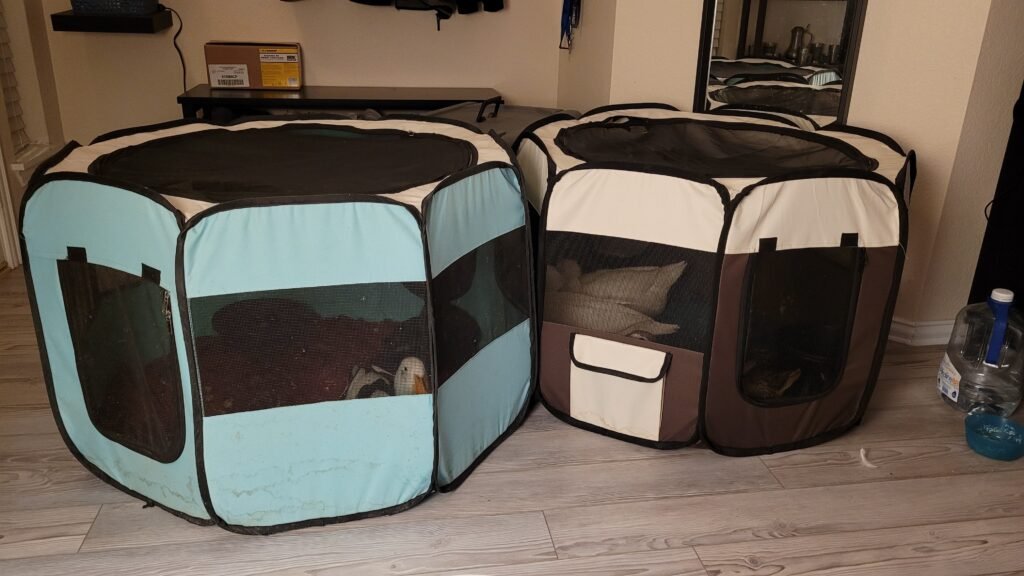
Foldable Metal Playpen
When we need a bit more room during the day or want to create a safe duck zone in a new room, a foldable metal playpen is perfect. It’s easy to move and great for blocking off no-go areas too.
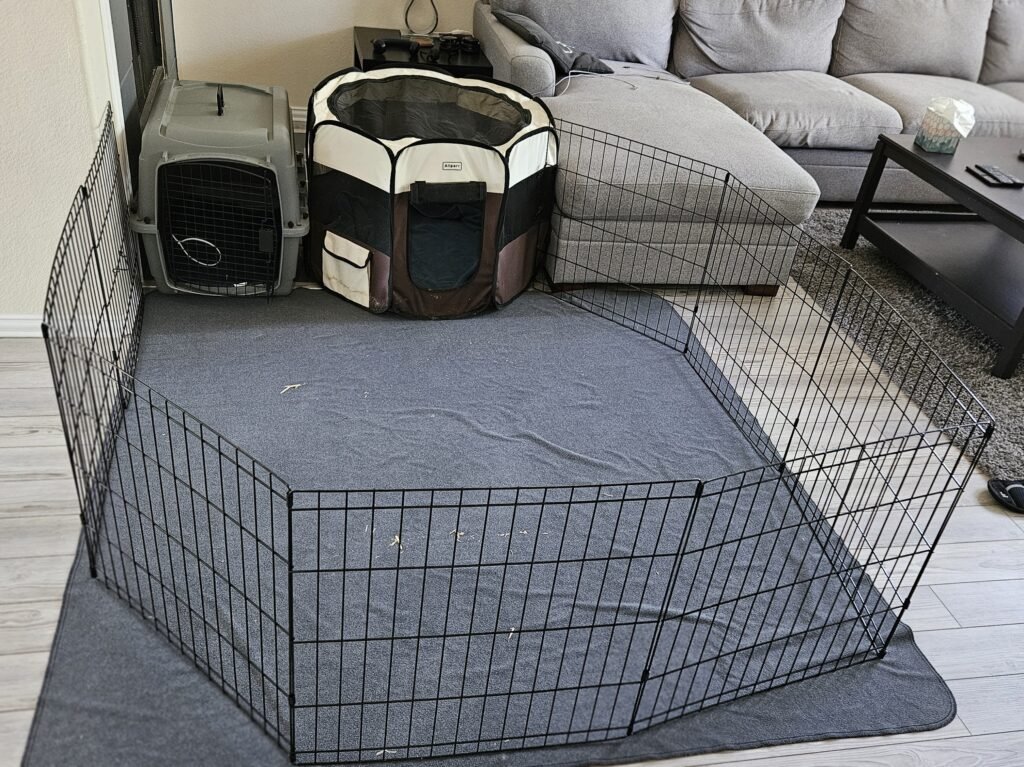
Washable Pet Blankets
We keep a stash of absorbent, washable pet blankets under their water bowls, in the playpen, and in favorite lounging spots. They catch splashes and poop and can be tossed in the wash with no fuss.
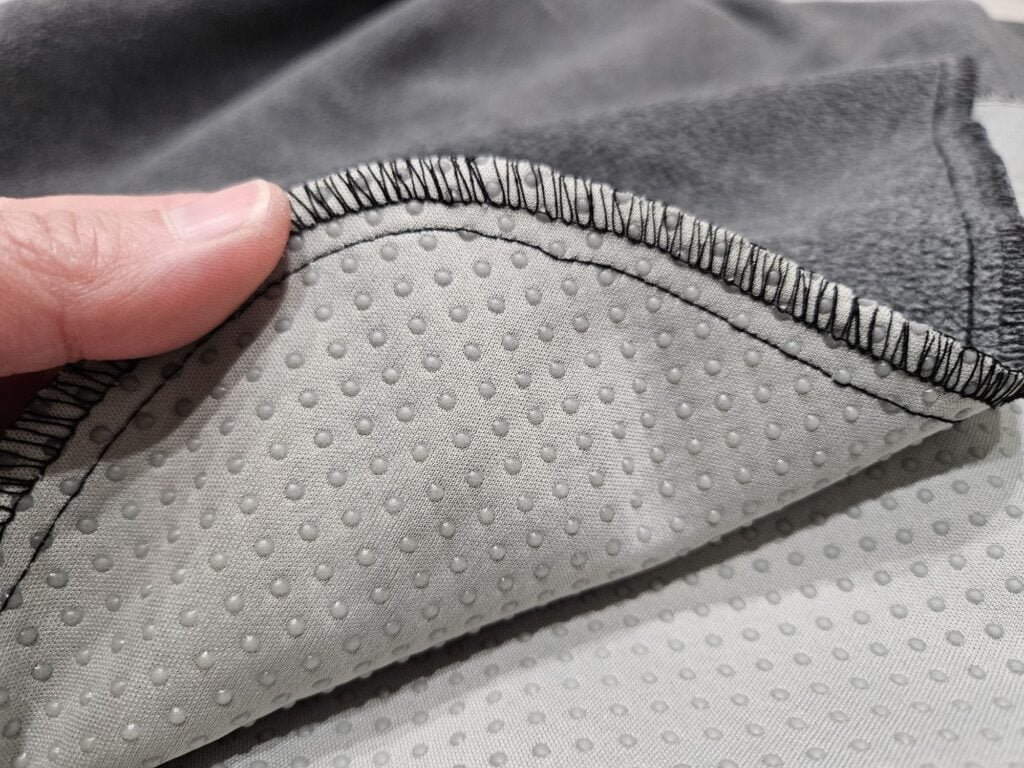
Washable Couch Cover
Let’s be honest—our ducks love hopping onto the couch during indoor time. A waterproof or machine-washable couch cover helps protect our furniture while still letting them be part of the family hangout.
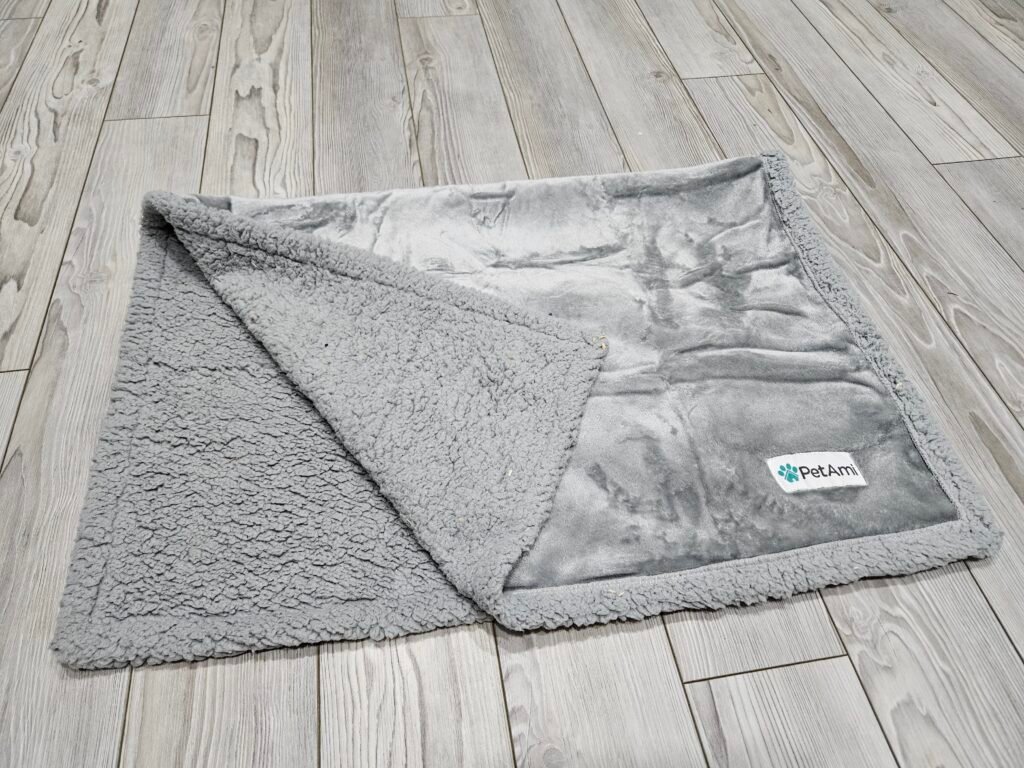
Plush Toys
Simple soft toys make great companions and comfort objects—especially for ducks like Muffin who love to cuddle. We rotate through a few clean, bill-safe plushies that stay in their sleeping area.
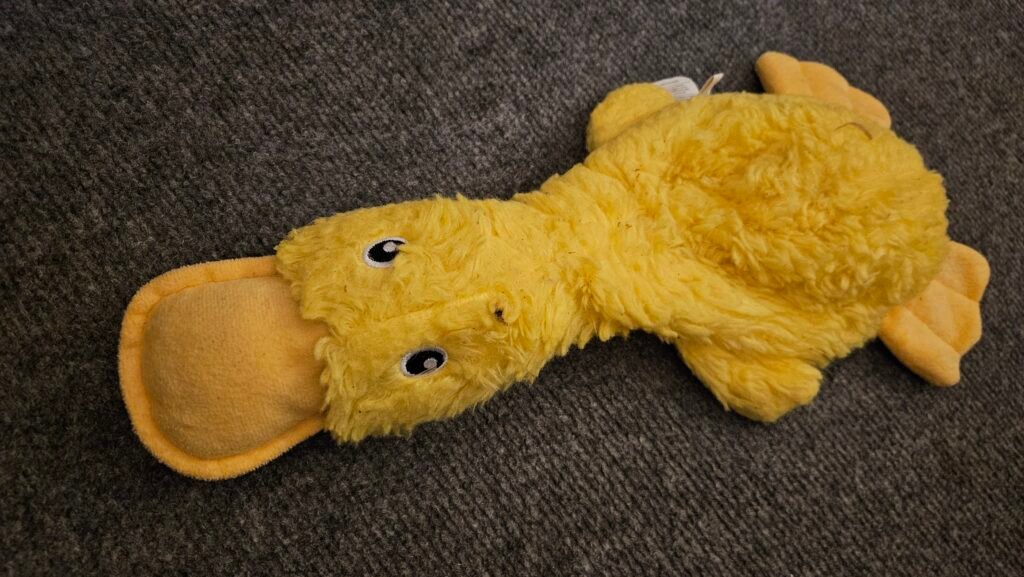
Snuffle Mat
These foraging mats are a fun way to keep ducks busy. We sprinkle a few Grubblies or bits of chopped lettuce in the folds and let them “hunt” through the layers.
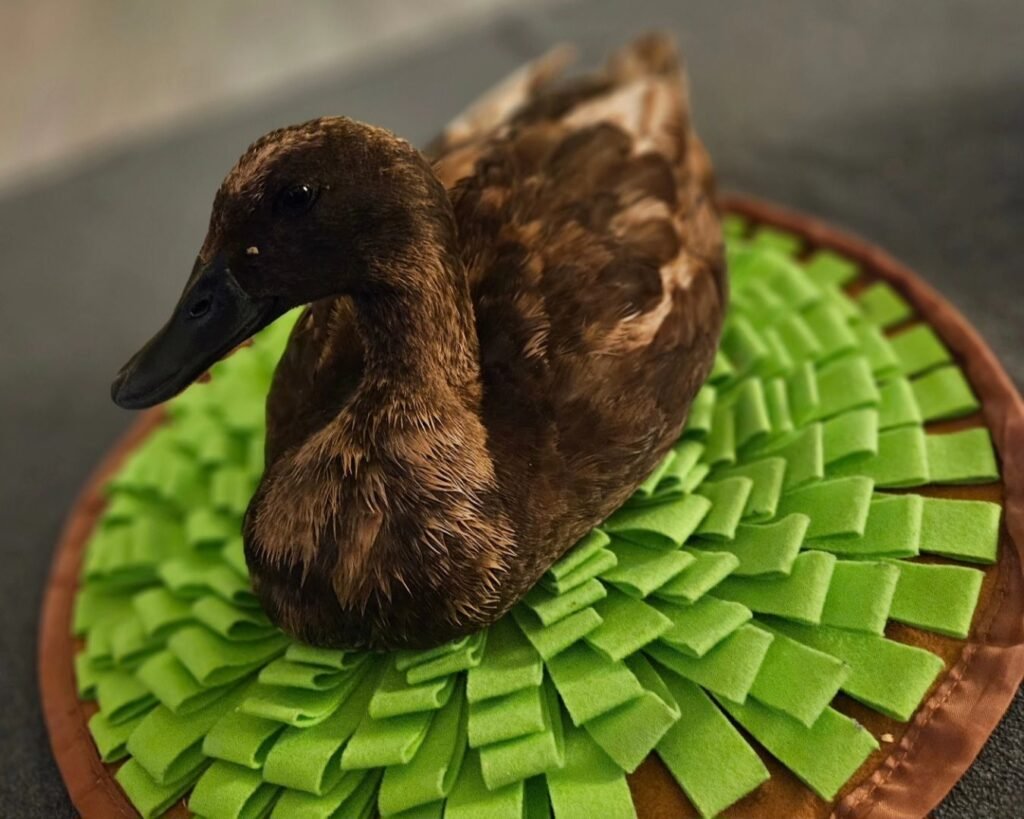
Treat Ball
A small treat-dispensing ball adds extra fun to snack time. We fill it with dried herbs, small treats, or bits of chopped greens and let the ducks nudge and roll it around.
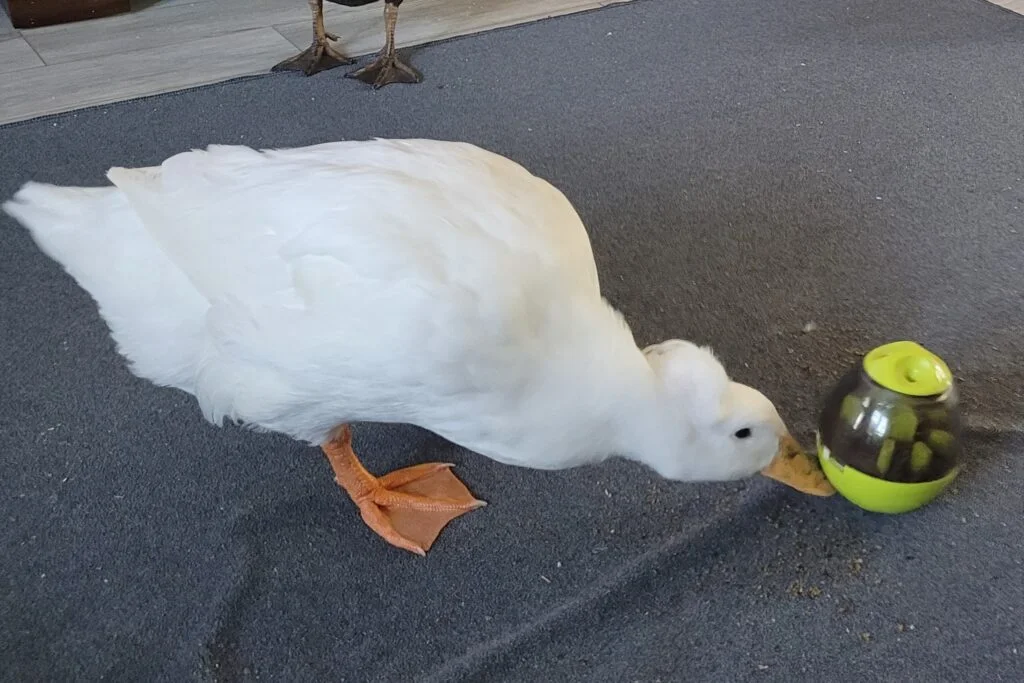
Water + Food Bowls
We use weighted or rubber-bottomed bowls that don’t tip easily. Inside the playpen, we place the water bowl inside a shallow container to catch splashes.
Hanging Toys
Lightweight, bird-safe toys or even homemade hanging items (like tied strips of fleece or plastic baby rings) add interest and give our ducks something to interact with when they’re resting indoors.
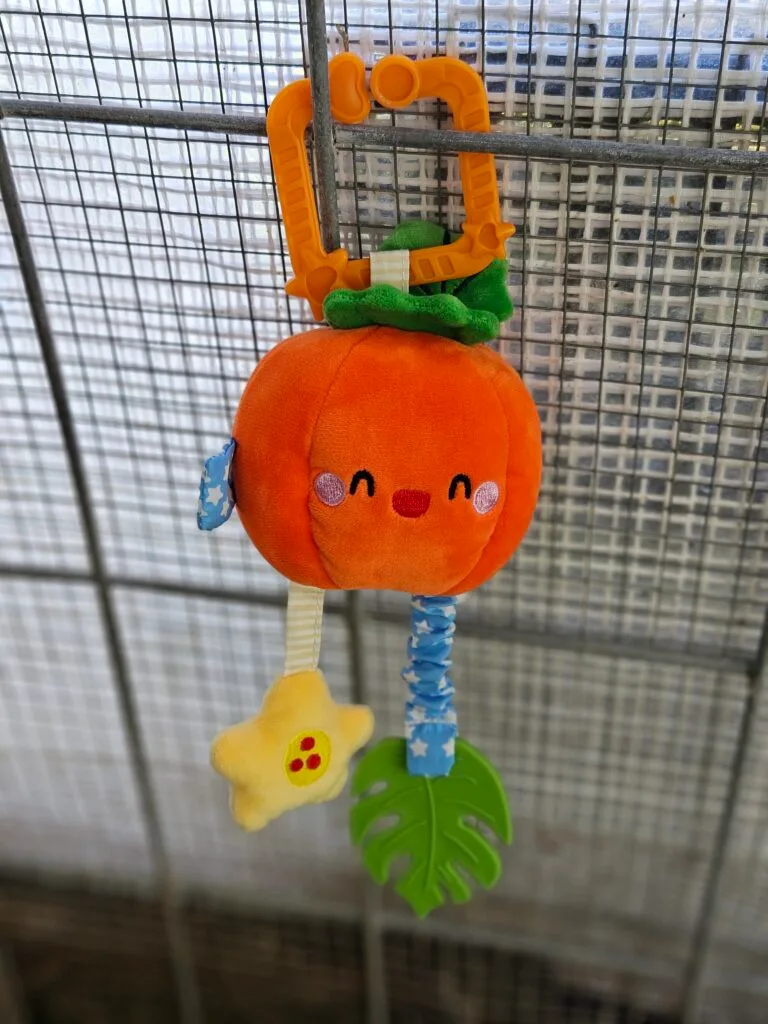
🛍️ Want to shop our favorites? We’ve put together a curated Amazon list of the items we personally use with our indoor ducks. 👉 Browse our Indoor Duck Essentials on Amazon
FAQ: Indoor Pet Ducks
Can ducks be potty-trained?
Not in the way dogs or cats can. Ducks have no control over when or where they poop—it just happens, frequently. Diapers are the best option for indoor time, and a well-set-up space with washable layers makes cleanup easier.
Can I keep just one duck indoors?
Ducks are flock animals and do best with at least one other duck companion. A solo duck, even with lots of human attention, can become lonely and stressed. If you can’t have more than one, you’ll need to be very involved and provide lots of social time and enrichment.
Are ducks cuddly pets?
Some can be! While most ducks don’t enjoy being held, they can be very affectionate in their own way—sitting next to you, following you around, or softly vocalizing when you talk to them. Krümel isn’t much of a cuddler, but Muffin loves to be close and often settles beside us on the couch.
Is it safe to let a duck roam freely indoors?
Yes, with supervision and a duck-proofed space. Cover cords, remove small objects, and block off unsafe areas. Use washable rugs or blankets to help with traction and cleanup. We let our ducks roam in certain rooms where we’ve created a duck-safe zone.
What do ducks eat indoors?
The same balanced diet they’d get outside, typically a quality waterfowl feed like Grubbly Farms, Mazuri, or Purina. Always provide access to water during meals and supplement with healthy veggies. Avoid processed foods and high-protein snacks.
Do indoor ducks need to bathe?
Yes! Even indoor ducks need water for preening and feather health. We offer bathtub swims or outdoor kiddie pool time regularly. This helps maintain waterproofing and allows them to clean and align their feathers.
How noisy are indoor ducks?
It depends on the duck. Some are quiet with soft chatter, while others are loud and opinionated, especially females. Muffin has a lot to say, while Krümel is usually quieter indoors. Expect some quacking, especially at feeding time or when excited.
Do ducks bond with humans?
Absolutely. Ducks can form strong bonds with their people, especially if raised from a young age or handled gently and consistently. They recognize voices, follow routines, and may even come when called.
How do you handle the smell?
Daily cleaning is essential—this includes diaper changes, wiping down surfaces, and washing blankets or liners. We also use a small HEPA air purifier in their sleeping area and avoid any strong-smelling cleaners or products that could irritate their sensitive respiratory system.
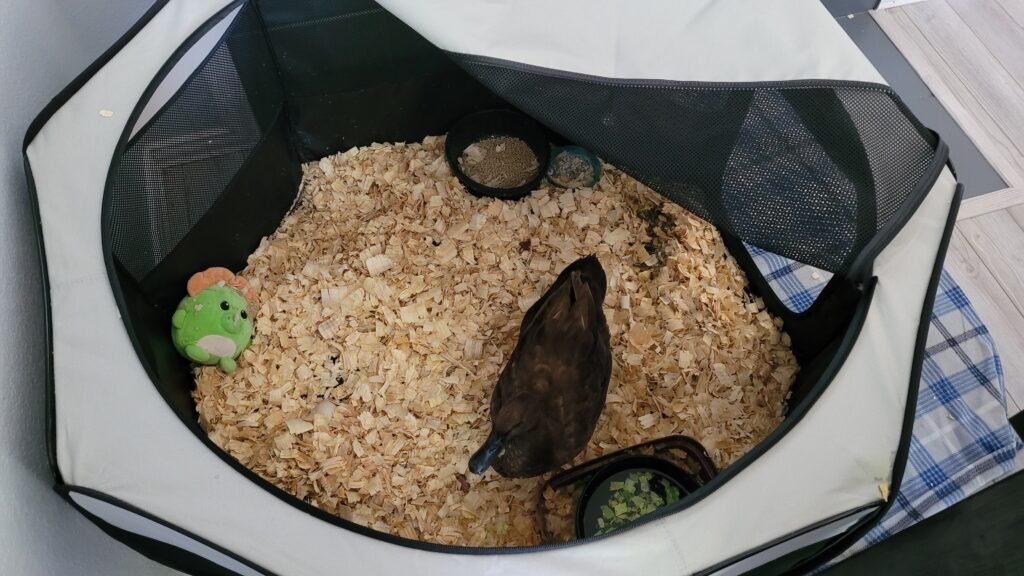
Final Thoughts
Sharing your home with a duck is a unique and deeply rewarding experience—but it’s also a commitment that requires patience, preparation, and flexibility. Ducks are not your typical house pets. They’re messy, loud, emotional, and endlessly curious—but they’re also affectionate, expressive, and capable of forming truly special bonds with the people who care for them.
For us, having Krümel and Muffin indoors—whether for evening cuddle time or full overnight stays—has brought so much joy to our daily routine. They make us laugh, keep us on our toes, and remind us that love can come in feathers and webbed feet, too.
If you’re considering an indoor duck or are already living with one, we hope this guide helps you create a safe, enriching environment where your duck can thrive. As always, every duck is different, so observe, adapt, and build a rhythm that works for both of you.

